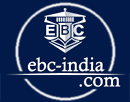|









|
One of the ways in which an existing law school desirous of maximising justice-orientation to its educational scheme is to try to identify the weaknesses in terms of justice education and to address them for reform. In this regard, the following issues generally appear to be inhibiting the movement towards a justice education
model. -
Human rights education and scholarship
are presently concentrating almost exclusively on civil and
political rights, neglecting social, economic and cultural rights
on which satisfaction of basic needs of the majority of population
is dependent. An attitude of dividing the curriculum into hard law
and soft law and of attaching prestige and status to such law
schools specialising on hard law which invariably concerns with
economics, trade and business. The funding sources and structure
of many law schools also promotes such an attitude. A lingering
feeling among some academics that practical training (clinical
education) is not the legitimate function of the law school, it
consumes disproportionate resources and its pursuit is not
conducive to true legal scholarship.
-
Continued inability of law schools to
integrate law study with study of social sciences and to mould a
research-led learning process in law schools which alone can
facilitate true study of ''law in context'' or law in society''.
-
Lack of value-orientation in the teaching
of law. It is manifest in the argument that lawyers should be
emotionally or ideologically detached from the issues they handle
which sometimes tend to disregard the public interest dimensions
of litigation. The emergence of public interest litigation in
India (which indeed are largely private interests collectively
pursued) is in part at least a reaction to such a posture in legal practice.
-
At least in certain countries like India,
the domination of the profession by persons belonging to one
gender or one caste has also inhibited the way lawyering was
perceived by people. It did leave some distortions which are
imperceptibly operating in justice dispensation and in the
delivery of legal services.
-
How does one go about in organizing the transition to justice education which is not just a matter of changing the curriculum and clinicalising legal education. The objects have to be reformulated, structural adjustment has to be pursued at all levels and standards of evaluation have to be re-drawn. A lot has to be unlearnt and re-learnt by teachers in a process of redrawing the prevailing mindset and creating an academic climate conducive to justice education.

|



